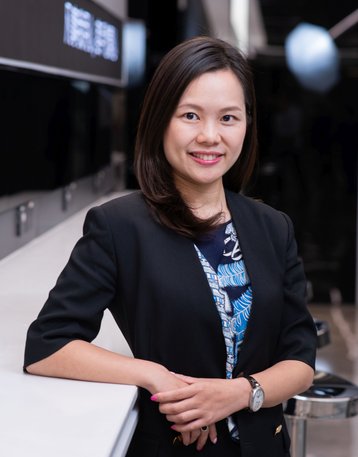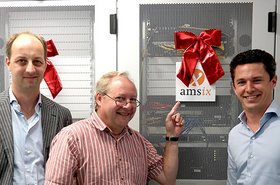The impact of Covid-19 on the economy and health of millions around the world is unprecedented in modern times. But at the same time, never has the world been more digitized, with widespread access to cloud computing and digital technologies giving large swathes of the world’s population the ability to work and school from the safety of home.
As the enabler of these digital capabilities, how are data center operators coping? We talked to two large colocation players in the data center hubs of Singapore and Hong Kong to find out how they are responding to the challenges posed by the pandemic.
Business as usual
For Clement Goh, CEO, Southeast Asia of ST Telemedia Global Data Centres (STT GDC), business and operations continue to operate as usual. Customers are still able to access data centers and carry out on-site works such as the deployment and decommissioning of continue, though Goh says customers are advised to refrain from non-essential visits and suspend on-site works for effective distancing measures.
While Singapore went into a “circuit breaker” lockdown in early April, submarine cables, Internet and mobile services, and data centers were identified as “essential services” and exempted from the strictest measures yet on the island state. This was tightened over the last two weeks to include the mandatory wearing of masks in public, and fines of S$300 (US$210) for first-time offenders of safe distancing measures. (On April 16, this was extended by another four weeks until June 1.)
It is business as usual in Hong Kong, which has seen substantially more success with zero new coronavirus infections on Monday, April 20. However, visitors to a data center of its iAdvantage subsidiary will be required to wear a mask indoors and have their temperature taken before being allowed in, says Fiona Lau, the executive director and commercial director of SUNeVision.
“We are one of the first data centers where we specify that visitors must wear a mask within our facilities,” said Lau, noting that this requirement is also enforced on employees as well as customers with offices within their colocation space. “Unfortunately, it is a measure that we must implement. I’m sure they are happy to be wearing a mask, rather than not be allowed to come in [should a cluster develop],” she said.
Staying ready
Both executives were quick to stress that the Covid-19 situation is fluid, which necessitates strategies such as split teams and daily health monitoring to minimize risks. STT GDC's Goh noted: “We have communicated the importance of adhering to the precautionary measures to flatten the curve and strongly urged our staff of different work team arrangements to avoid meeting one another at work and outside during this period.”
“[Shift handover] is done at designated rooms and we have cleaning and disinfection at common areas scheduled at each site at least twice daily. Given the recent advisory from the local authorities, our staff onsite have been maintaining safe hygiene and distancing and wearing masks to protect each other against infection,” he said.
While having staffers to “live in” at a data center is not part of its current plan, Lau says the organization is keeping its options open. “I understand that in some parts of the world such as in Europe, [providers] are not allowing customers to enter the facilities. I think they have a very different situation [with Covid-19] there. Obviously, that will upset a lot of customers, and it is not something we will resort to unless absolutely necessary - we don’t see it coming though.”
Keeping the machines running
Lau observed that Hong Kong experiences typhoon season every year, and its workers are therefore familiar with occasional lockdowns and sometimes having to take on more than one shift due to inclement weather. One upside is the provider has procedures to deal with various types of disruptions, as well as shower facilities within its data centers to cope.
But what of spare parts and replacement equipment for reliable operations? Spare parts are typically ordered four to six months ahead of time, which offers an inherent buffer, explained Lau. She said: “If the [Covid-19] situation is prolonged, it will obviously affect us one way or the other. But with China now reopening, US thinking about reopening, I think the situation is looking okay; though we are closely monitoring the situation.”
“Our major supplies and spare parts have been reserved with a committed turnaround time with our vendors and suppliers as outlined in our contracts. When the local government raised the color-coded pandemic framework to DORSCON orange, we have reassurance from all our vendors to be on standby to support us. We also made sure that critical supplies are on-site, such as fuel to fill up the tanks for backup power,” said Goh of plans to ensure availability in case of logistics disruptions.
After the storm
While many businesses are badly affected by Covid-19, there is an undeniable surge in demand for data centers from certain segments. Said Lau: “[Customers such as OTT players] actually increase their capacity in the last month or two. The net growth in cross-connects on a month to month increased 50 percent in March compared to February.”
In the meantime, enterprises that have hunkered down and tightened their belts in terms of IT spending are rethinking their IT architecture. For instance, businesses are reevaluating their business continuity plans (BCP) with pandemics in mind: “We are hearing some customers thinking of whether we should split the backup site to three other sites. People are thinking more about risk management and risk diversification.”
Goh affirmed that STT GDC has seen an increase in capacity utilization, driven by customers of cloud and content segments for urgent provisioning of network, as well as for additional capacity due to a surge in demand from telecommuting users: “[Cloud and content segment] customers have raised urgent cross-connect provisioning as well as an accelerated ramp in consuming their contracted capacity with us.”
“They are also planning ahead by contracting additional space with us as they expect further increase in demand for their services in the near future, especially when there will be a data center capacity shortage from the temporary pause placed in new builds by the local government,” he summed up, referring to the moratorium on new data centers in Singapore.
While we can only hope that the storm will pass soon, there is no question that the role of data centers will only become more important than ever.





